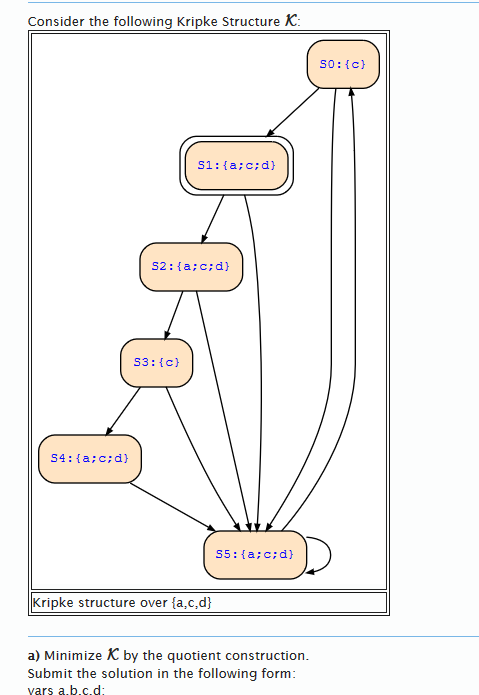
Compute the greatest Bisimulation between K1 and itself.
step 0: {(S0,S0);(S0,S3);(S1,S1);(S1,S2);(S1,S4);(S1,S5);(S2,S1);(S2,S2);(S2,S4);(S2,S5);(S3,S0);(S3,S3);(S4,S1);(S4,S2);(S4,S4);(S4,S5);(S5,S1);(S5,S2);(S5,S4);(S5,S5)}
step 1: {(S0,S0);(S0,S3);(S1,S1);(S1,S4);(S1,S5);(S2,S2);(S3,S0);(S3,S3);(S4,S1);(S4,S4);(S4,S5);(S5,S1);(S5,S4);(S5,S5)}
step 2: {(S0,S0);(S0,S3);(S1,S1);(S2,S2);(S3,S0);(S3,S3);(S4,S4);(S4,S5);(S5,S4);(S5,S5)}
step 3: {(S0,S0);(S1,S1);(S2,S2);(S3,S3);(S4,S4);(S4,S5);(S5,S4);(S5,Q5)} --- fixed pointsMerging similar group are (s4,s5)
so i have final representation :
vars a,c,d;
labels 0:a,c,d;
transitions 0->0;
but my solution is incorrect